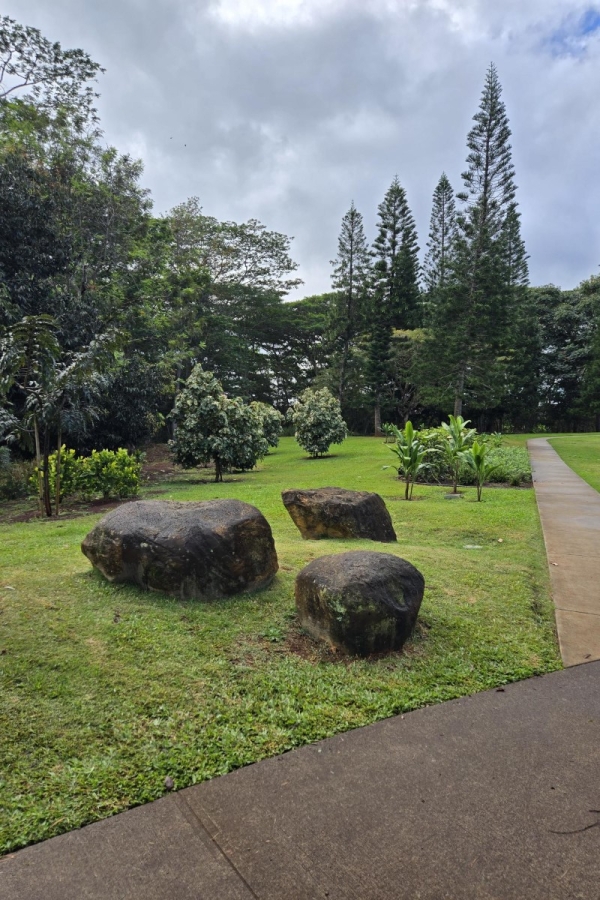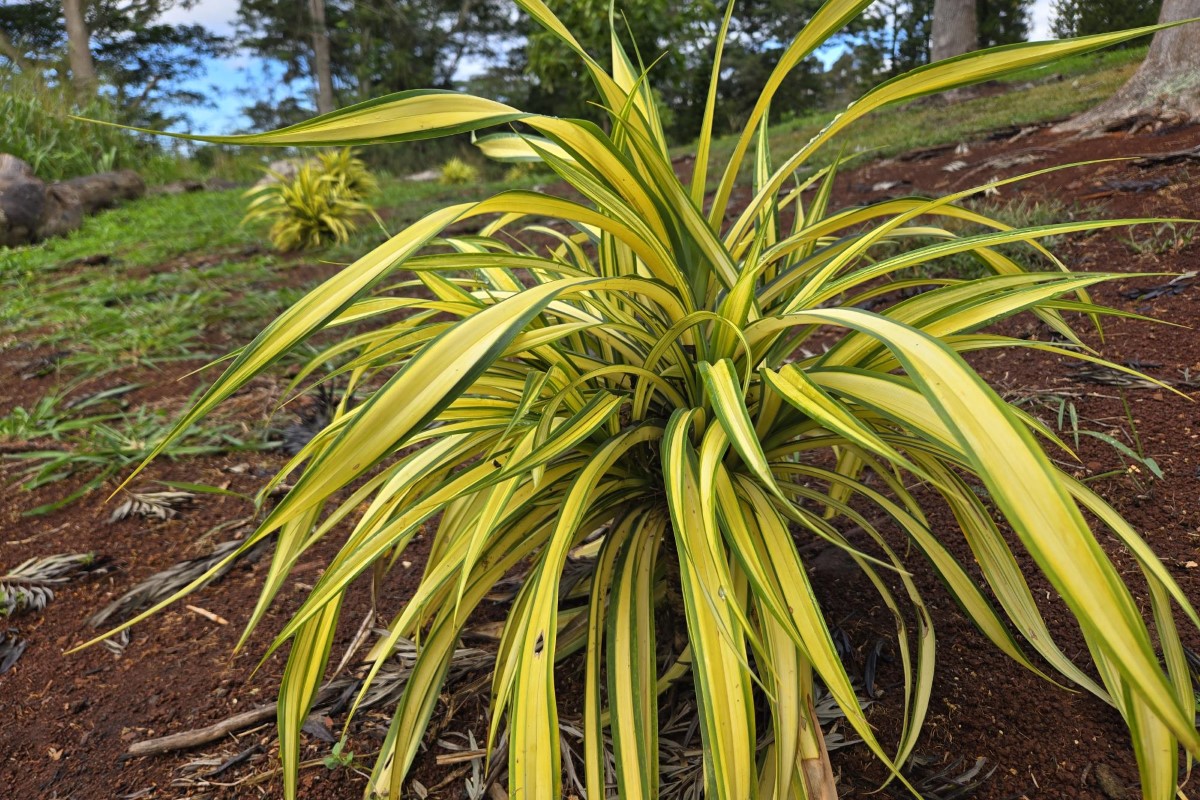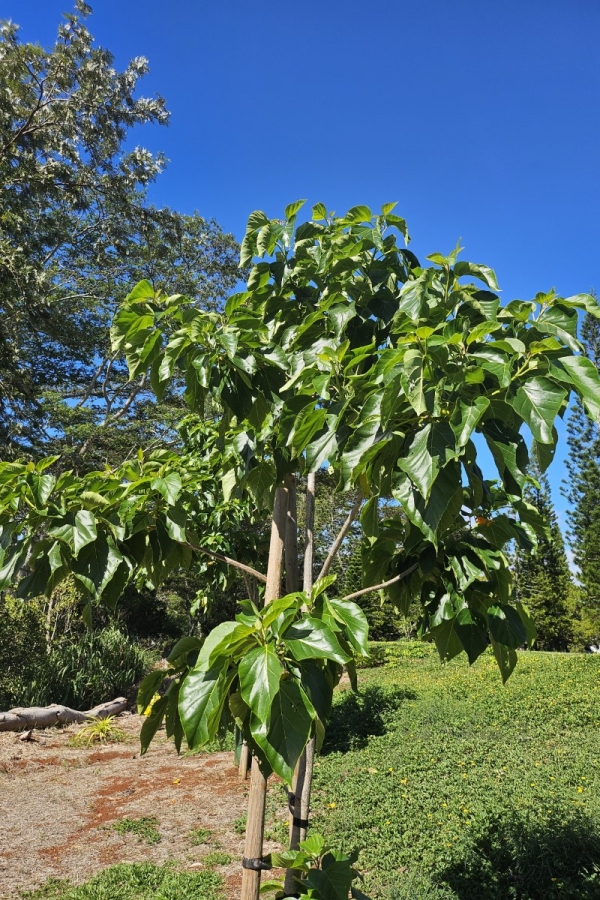MTA Nature Walk – Zone 3
Nature Walk – Zone 3
Hawaii’s native flora is as unique as it is diverse, with approximately 1,400 vascular plant taxa native to the islands, and nearly 90% of these are found nowhere else in the world. The rich tapestry of plants includes the native Akia plant, the Pohinahina, used medicinally by native Hawaiians, and the Kupukupu fern used in traditional Hula, are just a few examples of the islands’ botanical treasures. Conservation efforts are crucial to protect these species from threats such as habitat loss, invasive species, and climate change. Initiatives include surveying historic ranges, augmenting wild populations, and establishing new ones in safe harbors. The MTA Nature Walk was developed to highlight these plant species and other important fauna of Hawaiian culture and landscapes.
Zone 3 Plants
Variegated Hau Tree
Hawaiian Name: Hau
Scientific Name: Hibiscus tiliaceus
Common Name: Variegated Hau Tree
The variegated Hau tree (Hibiscus tiliaceus), locally known in Hawaii as Hau, is a visually striking and culturally significant plant. Its multicolored leaves, displaying vibrant shades of red, pink, white, and green, make it a delightful addition to gardens and landscapes.
Possibly indigenous to Hawaii, the Hau tree has been deeply interwoven with Polynesian culture. Its fibers were traditionally used to create cordage, essential for daily life, while its lightweight wood was crafted into canoe parts and fishnet floats. Medicinally, the sap and flower buds were utilized in remedies for various ailments.
The Hau trees flowers are particularly remarkable, blooming year-round. They open yellow in the morning and transition to red by the end of the day. These trees are a testament to Hawaiis rich biodiversity and symbolize the profound connection between the natural world and Hawaiian cultural practices.
Kou Tree
Hawaiian Name: Kou
Scientific Name: Cordia subcordata
Common Name: Kou Tree
The Kou tree (Cordia subcordata) is an indigenous species to the Hawaiian Islands, thriving in coastal areas and sunny zones at low elevations ranging from 150 to 1,000 feet. This resilient tree is well-known for its drought, wind, and salt tolerance, making it a prominent feature in Hawaiian landscapes.
Traditionally, Kou wood was highly valued for its ease of carving and the beauty of its grain. It was commonly used to create calabashes, dishes, and other utensils. The leaves of the Kou tree also hold cultural significance, as they were used to produce a warm brown to red dye for kapa (bark cloth) and to dye fishing lines for fishermen.
The tree’s vibrant orange flowers are visually striking and often used to craft beautiful lei. The Kou tree’s presence is deeply interwoven with Hawaii’s history and culture. Once thought to have been introduced by Polynesians, it is now recognized as a native species that predates human arrival.


